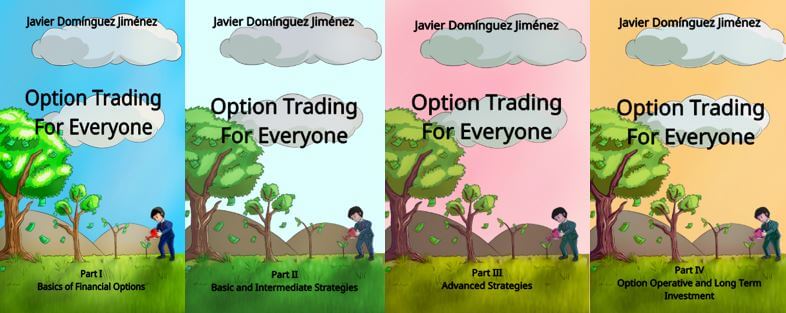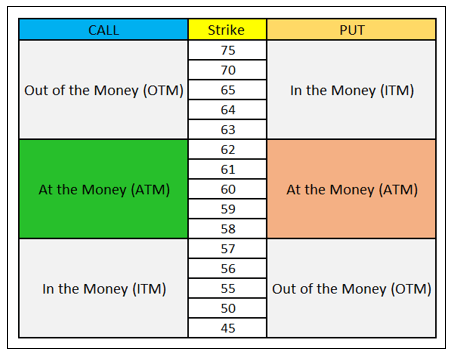Out of the Money Option – The Cheapest of the 3 Moneyness States
An Out of The Money option is one of the three different states we can find in an option contract attending to the relationship between the underlying and the strike price of an option.
In this guide, we will learn what are Out of the Money options, and we will answer several questions such as what happens when an option expires Out of The Money or when to buy Out of The Money options and much more!
Table of Contents
Let us begin with the basics…
What are Out of the Money options?
The Out of The Money option is one of the three main states we can find an option contract attending the relationship between the strike price and the price of the underlying asset we are dealing with in the option chain.
An Out of the Money option is also called OTM option, and they are the cheapest options of the entire market if we compared them with the At The Money options or with the In The Money options.
The reason is because they only have extrinsic value forming their premium and have no intrinsic value.
What is an Out of The Money call option then?
We will say we have an Out of the Money call option when the strike price is above the current underlying price. Let us take a look at the following image to understand this better.
Out of The Money call option example
If we had a company whose share prices were $60, all those strike prices above that value would be Out of The Money call options, exactly as the previous table represents.
Remember that all the Out of The Money call options are cheaper than any other call option.
If we decided to buy an Out of The Money call option and immediately exercise it, we would be obtaining a losing trade because we would have some stocks with a higher price than the current underlying price.
What is an Out of The Money put option?
In this case, we will say we have an Out of The Money put option when the strike prices are under the current underlying price.
An Out of the Money put option example
If we had a company whose share prices were $60, all those strike prices under that value would be Out of The Money put options.
As you can see, it is exactly the opposite of the Out of the Money call option.
An Out of The Money example with more details
Let us suppose we want to buy some Out of the Money call option from Costco Wholesales.
After performing the technical analysis, we have determined that the stock price will undoubtedly rise to $400 in a few months, and we know their current price is at $350 per title.
We now enter the option market and decide to buy a contract whose strike price is above the current share price, an Out of The Money call option contract. We will buy, for example, the call whose strike price is $370 and for a four-month expiration date.
In this case, when we buy that specific call, we will pay a much lower price than another call with a strike price closer to the current share value. For this reason, we will be buying an Out of The Money call option contract, so we will be paying much less, since we are sure that share prices will reach $400.
With an Out of The Money put option contract, it works the other way around.
If the share price of Costco Wholesales is currently at $350, any strike price below that value will be considered an Out of The Money put option.
And again, for the same reason. If we decide to buy a contract whose strike price is $330 and exercise it on the spot, we will get a short position with a $20 loss, so there is no point in exercising this contract.
Again, the main idea is to buy an Out of The Money put option with the intention that share prices fall before the expiration date. Otherwise, the buyer will not make any kind of profit.
Why buy Out of The Money options?
The reason is because the enormous power of leverage they provide. Following the Out of The Money call option definition, if we manage to buy a contract that eventually becomes an In The Money option, the premium of our option will dramatically increase as we saw in this article here.
Can Out of The Money options be exercised?
Technically, yes, they can be exercised.
However, there is no point, as we saw in the previous examples, as we would be paying a much more expensive stock compared to what we could buy at the stock market.
Can Out of The Money options be assigned?
Again, yes. However, it is improbable for the same reasons we have seen.
Do you need a Calculator that helps you create and analyze any option strategy in record time?
What happens when the option expires out of the money?
The big disadvantage for an Out of the Money option buyer is the following: if the underlying price does not exceed the strike price before the expiration date, the Out of The money contract will become worthless.
If we were to exercise our rights, we would obtain shares whose value is higher than the current underlying price in the Out of The Money call option or shares whose value is lower than the current stock price in the Out of the Money put options.
In other words, we would be generating a loss. In these cases, the best decision is to let the contract expire worthless and assume that the premium has been lost.
However, in the selling side of the option, the loss of the buyer becomes the gain. As long as the price does not reach the strike price value, the seller will keep the premium paid by the buyer.
How to calculate Out of The Money options?
The best way to calculate Out of The Money options is by using an option trading calculator that emulates the Black-Scholes model. If you need one, you can always download our free calculator here along with our free Options Guide!




